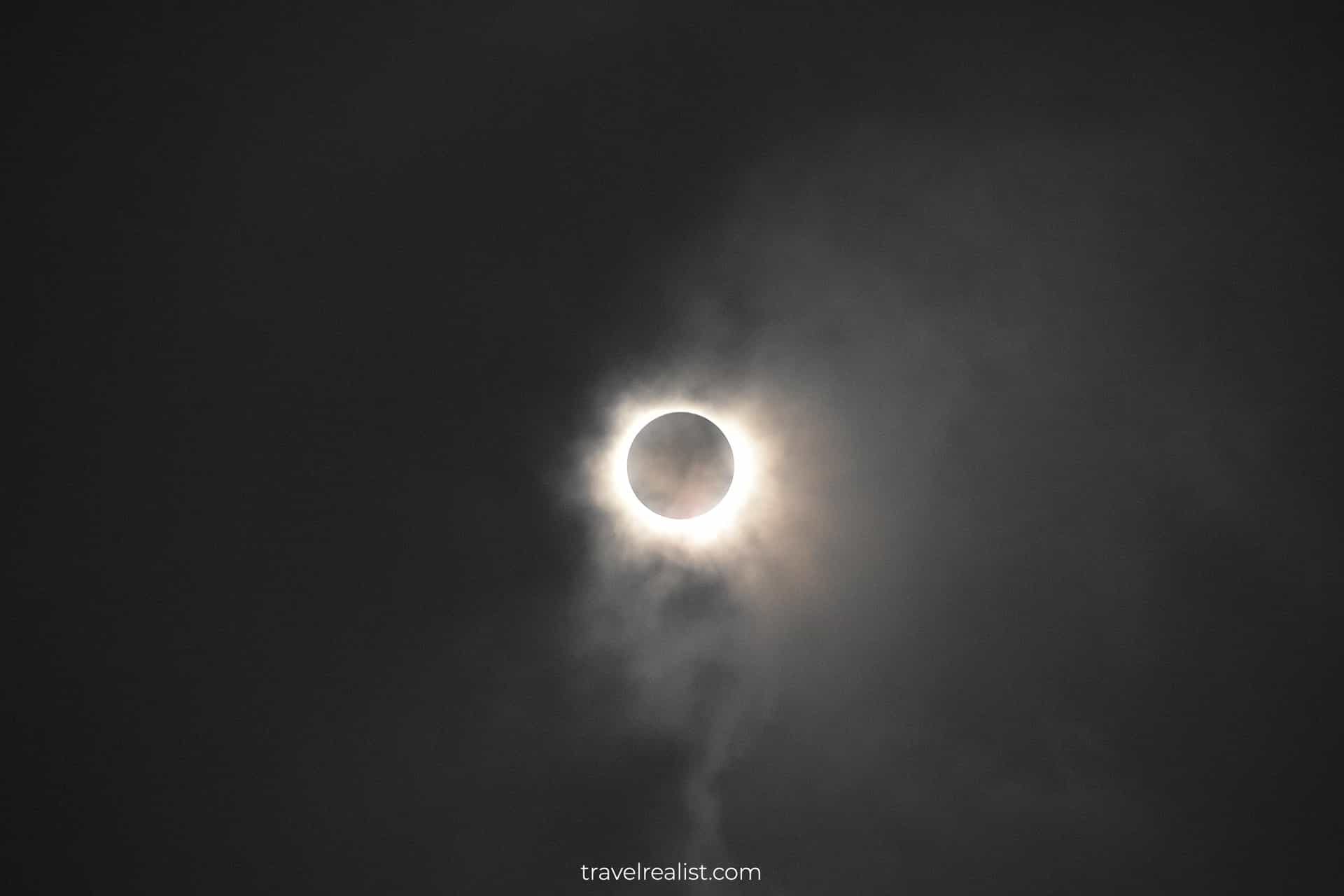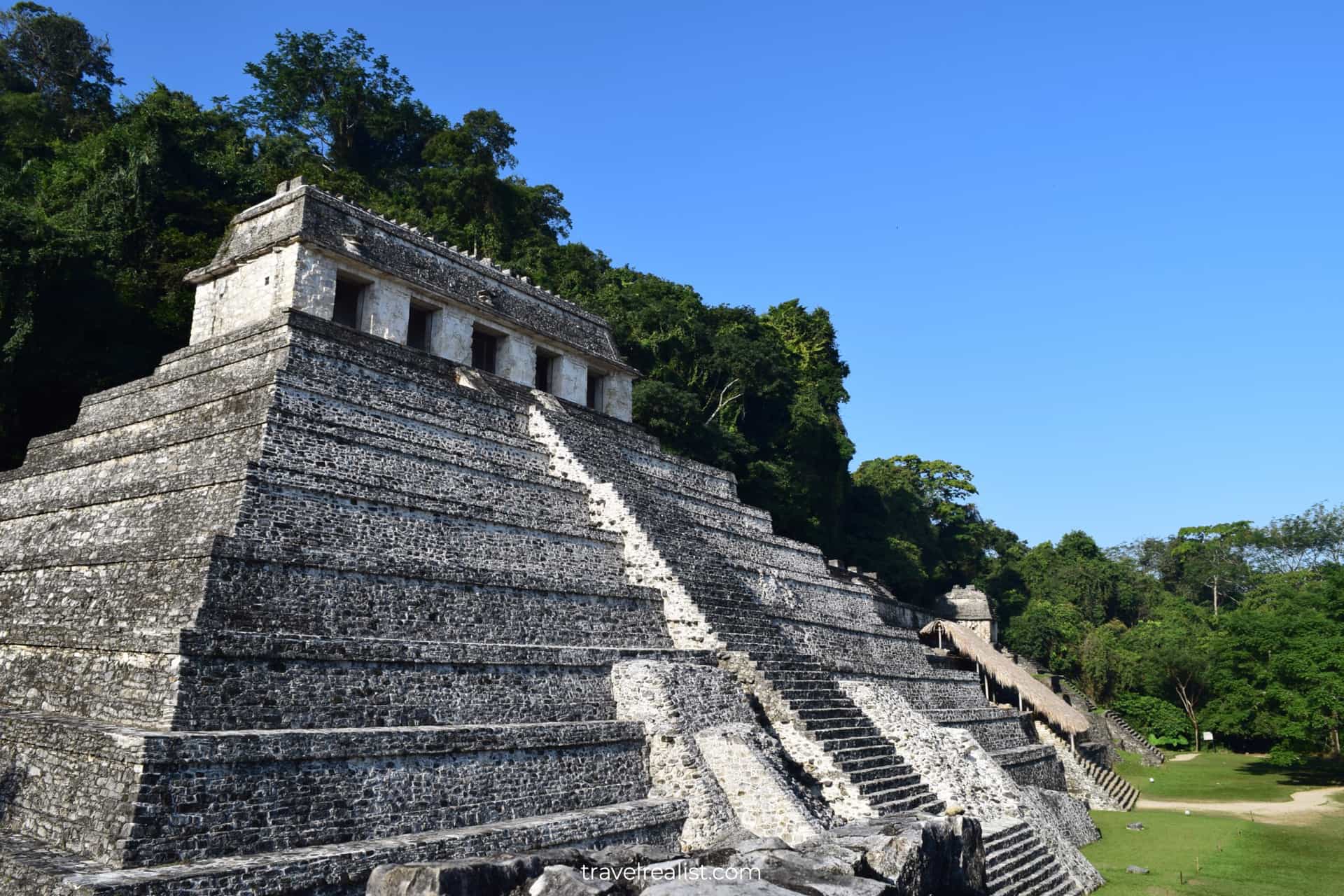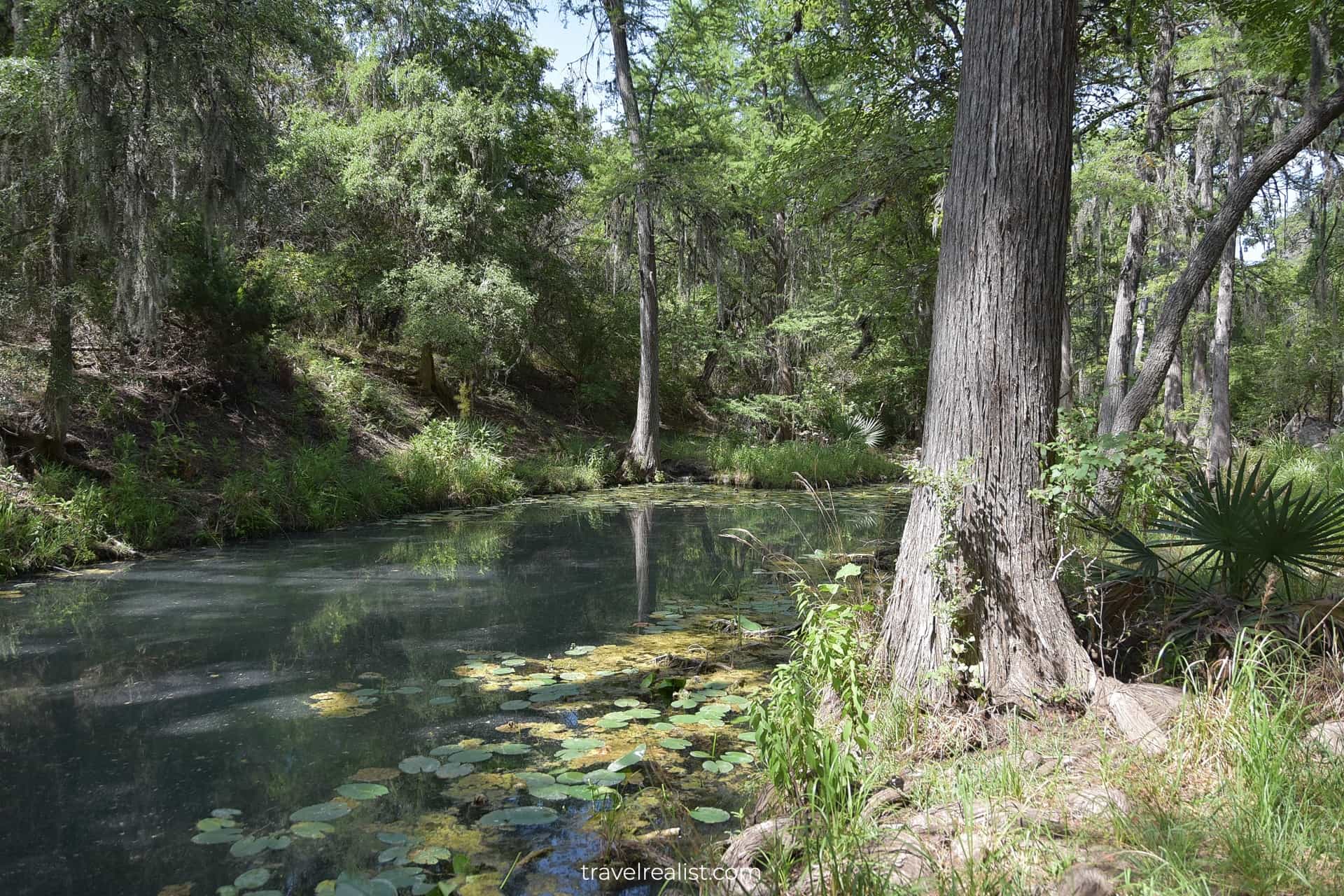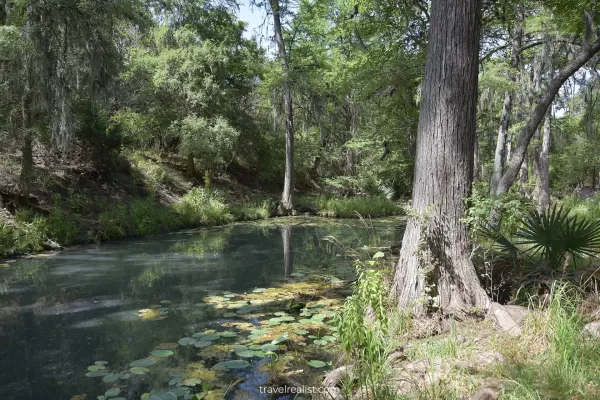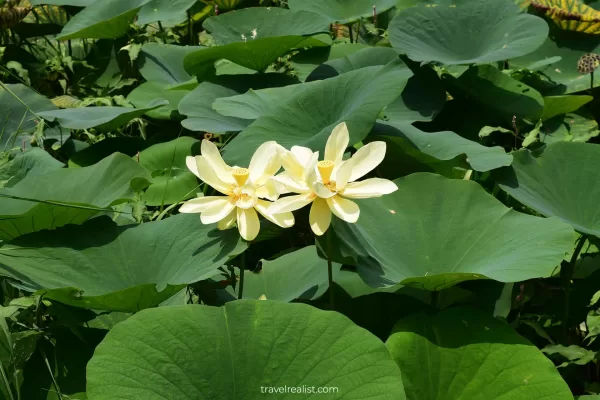Redwood Scenic Parkway: Best Way to See The Tallest Trees
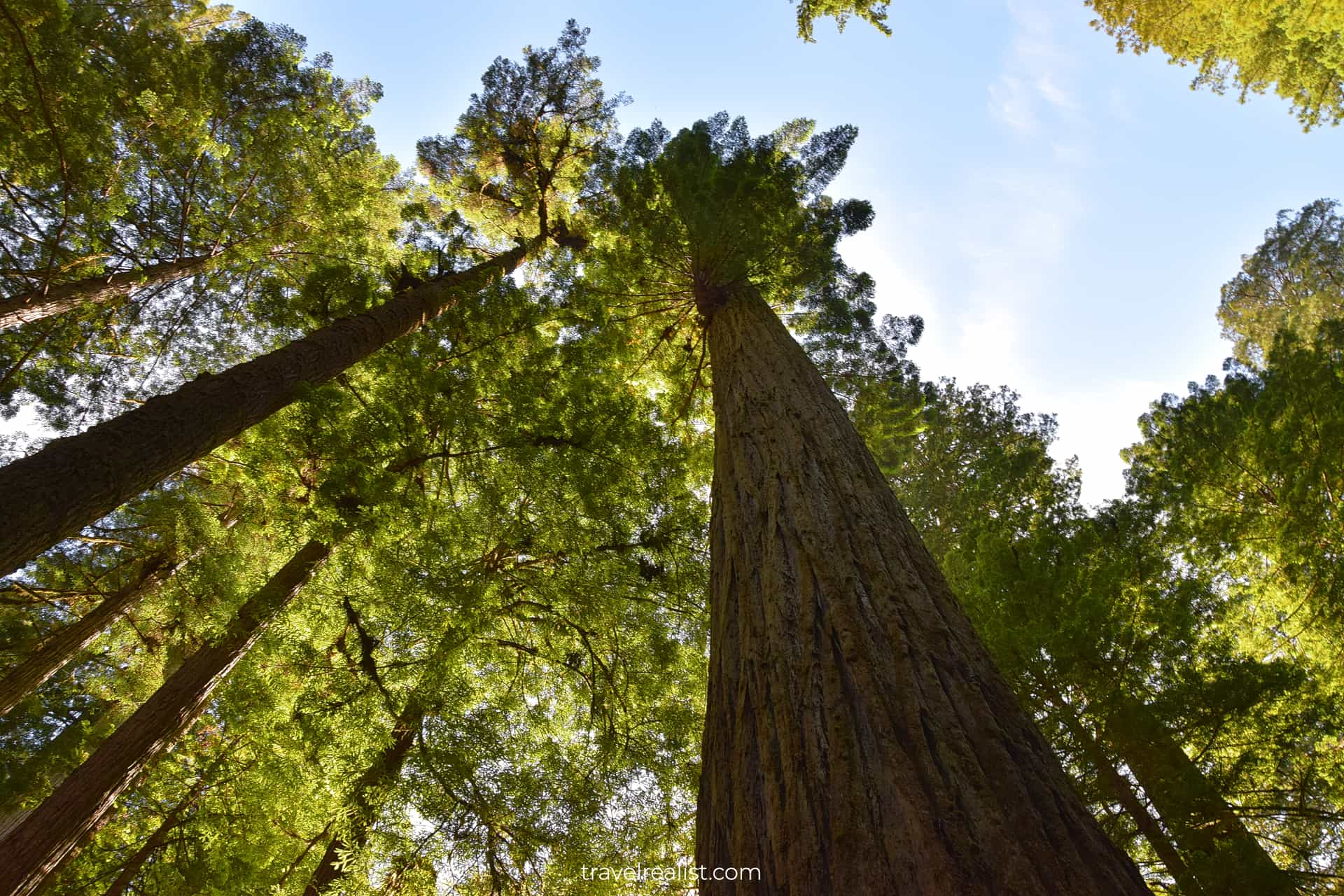
This realistic Redwood Scenic Parkway Guide helps you plan your next adventure next to the world’s tallest trees.
Redwood National and State Parks in California are home to the tallest trees on Earth. Redwood is the crown jewel of Northern California parks.
This post includes affiliate links that will earn us commission if you make a purchase via these links.
Sights & Places of Interest
The name of Redwood National and State Parks gives away the main attraction. Most people come to the park to see the same name trees. Redwood trees are California natives.
They were growing throughout the state back in the day. But logging greatly reduced the number of live redwoods. Interior design and furniture you could now see at house museums is partly to blame.
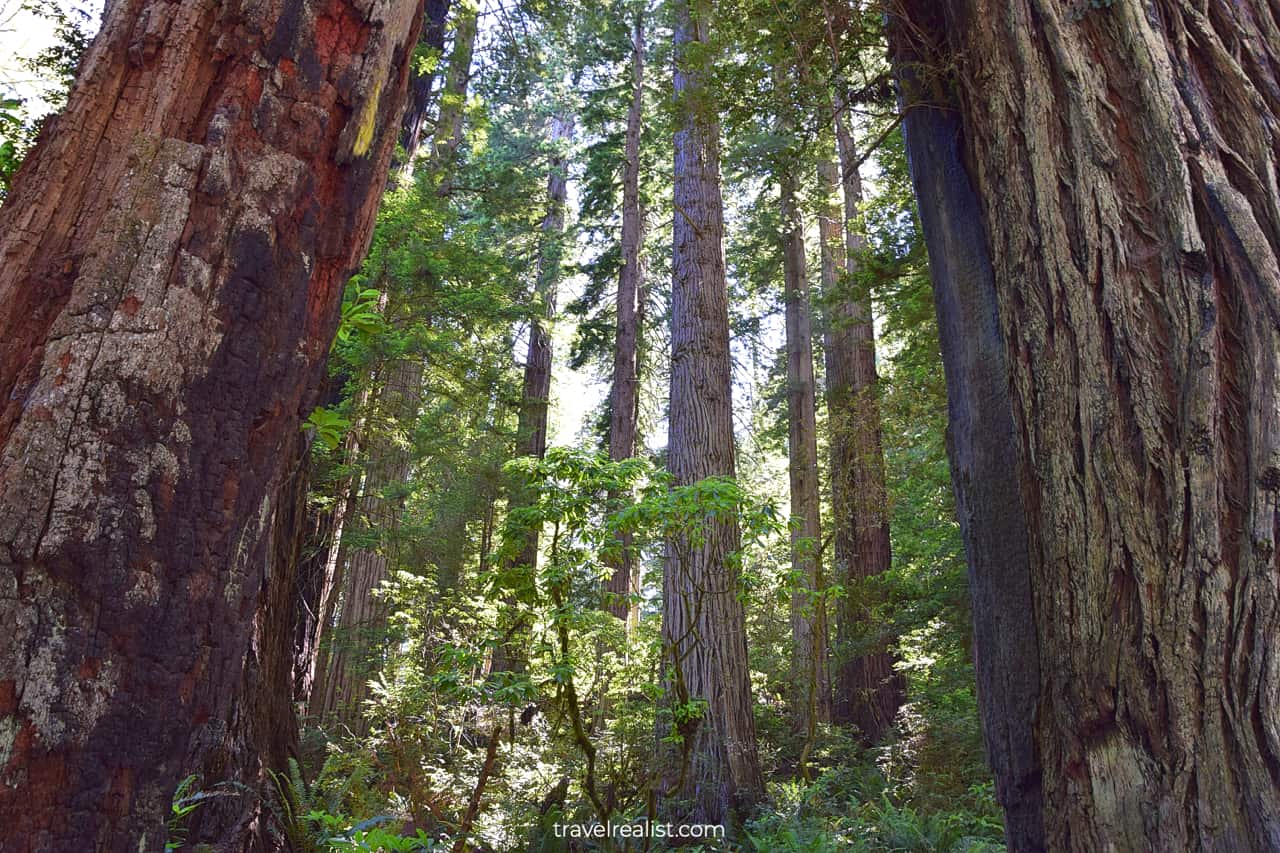
It became necessary to protect redwoods for future generations. This effort led to the creation of Redwood National Park in 1968.
But the giant trees are far from the only attraction in Redwood. The parks offer so much more than forests and groves. You could explore coastline, rivers, creeks, and prairies.
You will be also driving on some of the most scenic parkways in California when you visit Redwood.
1. Redwood Highway
The Redwood Highway is the longest scenic drive in the park. It includes sections of two highways.
- The first section is Highway US-199 from Grants Pass, Oregon to Crescent City, California.
- The second section is Highway US-101 from Crescent City to Eureka.
The Redwood Highway continues for nearly 170 miles (274 km) from Grants Pass, Oregon to Eureka, California. It brings you through all Redwood National and State Parks.
The most scenic section of the Redwood Highway is a 51-mile (82-km) stretch between two visitor centers. It starts at the Hiouchi Visitor Center and finishes at the Kuchel Visitor Center.
You can add another 9 miles (14 km) if you visit Crescent Beach Overlook and Klamath River Overlook. These scenic vistas are worth an additional 20-minute drive.
This Redwood Scenic Parkway Guide follows the southbound drive on the Redwood Highway.
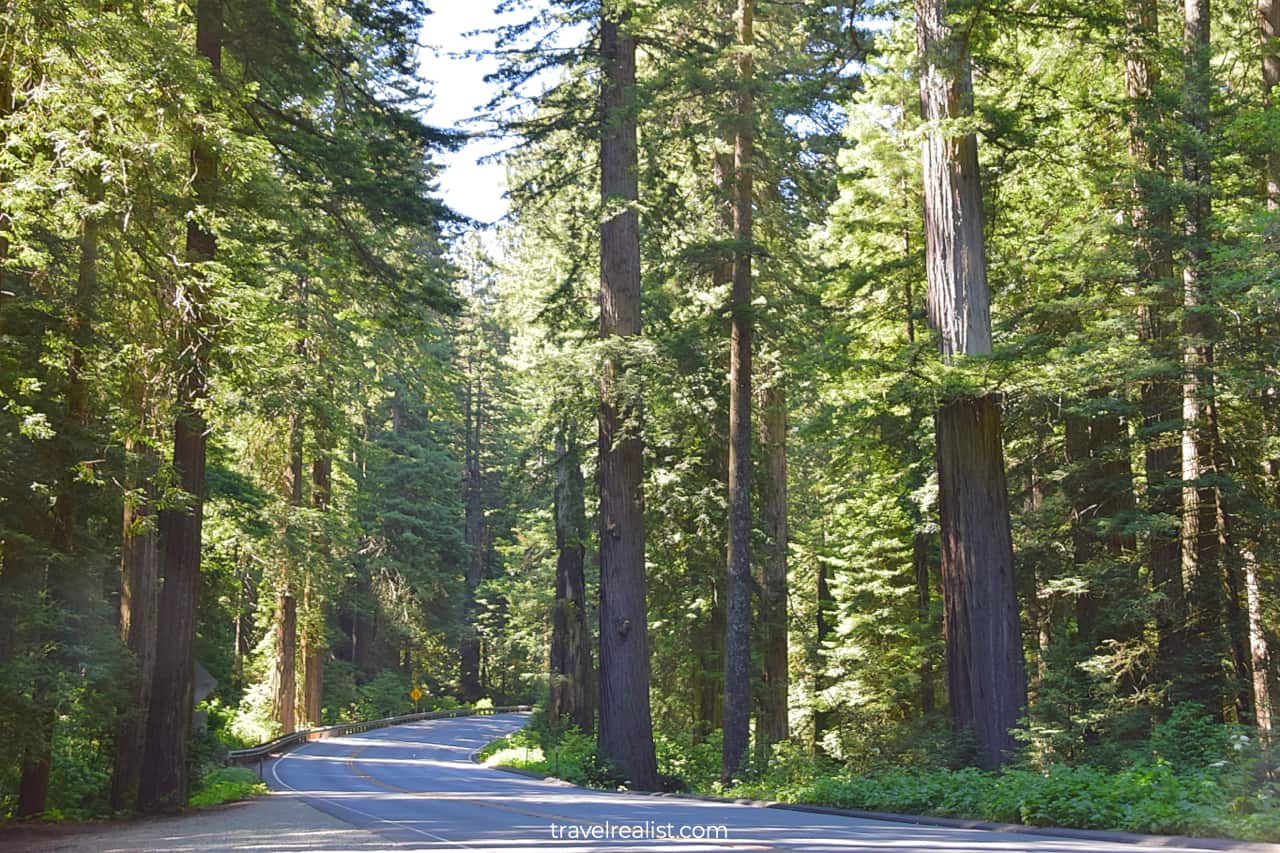
2. Jedediah Smith Redwoods State Park
Highway US-199 goes through a beautiful mountainous area as soon as it leaves O’Brien, Oregon. You will pass Smith River National Recreation Area on your way to the first Redwood National and State Park.
Jedediah Smith Redwoods State Park is an amazing place to see redwoods. The park is just 15 minutes from Crescent City near the intersection of Highways US-199 and US-101.
You can start your exploration of the park with the Hiouchi Visitor Center. The Visitor Center is on the right bank of the Smith River. There are no redwood grove trails next to it.
But there is a 1.3-mi (2-km) Wellman Trail very close to the Visitor Center. The Wellman Grove is a challenging hike due to 449 ft (137 m) in elevation gain. It is not the best first hike in Redwood.
You will be better off driving 5 minutes to Simpson-Reed Grove. You could then take the 0.8-mi (1.3-km) Pearson Memorial Trail from this grove.
This flat and easy path brings you along some of the highest trees in the park. You can finish this hike in less than 30 minutes.
You can continue on the Redwood Highway to Crescent City after your hike. Or you could take a slower but a more scenic route.
The Howland Hill Road is only partially paved. This narrow mountain road will bring you right next to the redwood trees. It will add about 30 minutes to your drive. But this experience is worth the extra time.
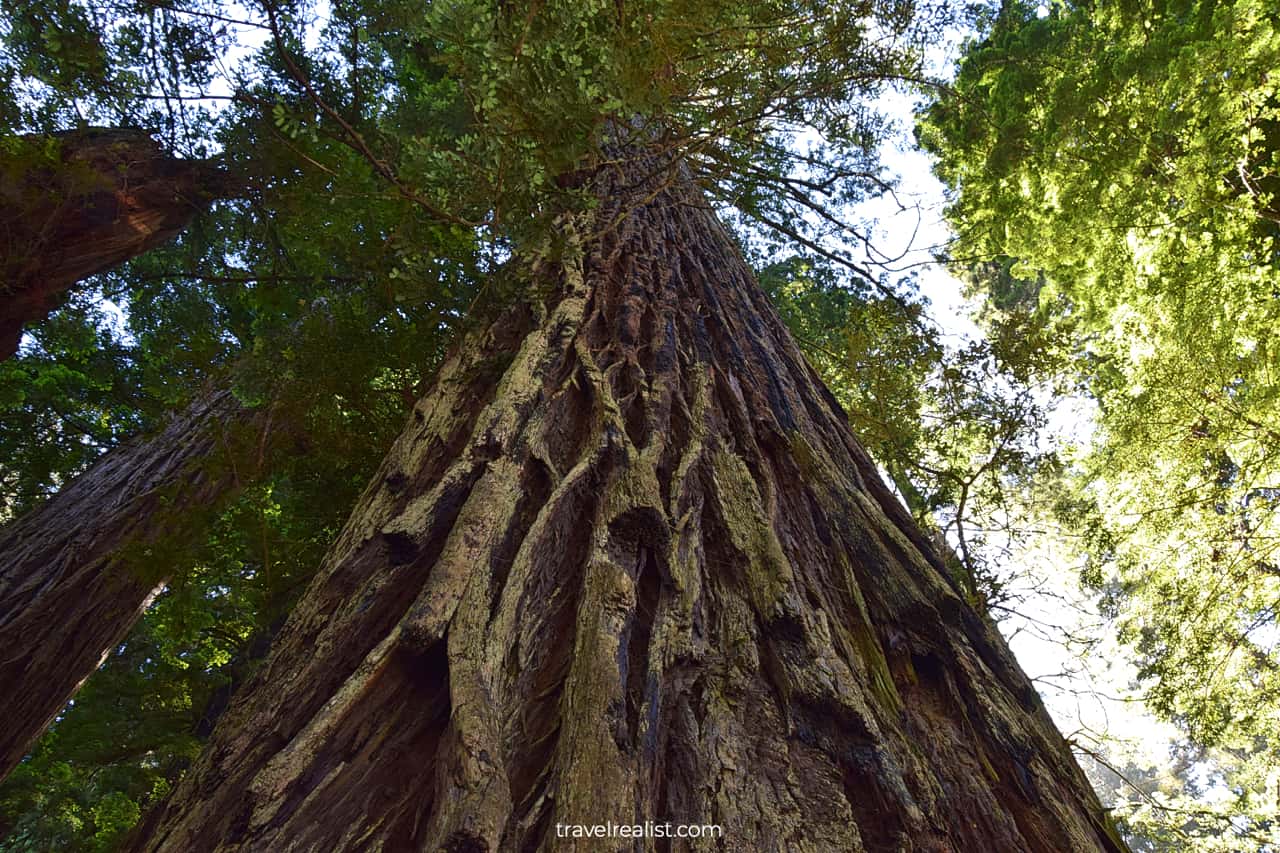
3. Crescent City
Redwood National and State Parks are a unique destination in many ways. The location of the park headquarters is one of them.
You can find the Redwoods Information Center and Park Headquarters in Crescent City. While it is a good stop to learn about the park, it is outside of the park boundaries.
You need to drive for 10 minutes to any of the parks that make up Redwood National and State Parks.
4. Del Norte Coast Redwoods State Park
You will enter the second Redwood National and State Park soon after leaving Crescent City. The vista point at Crescent Beach will mean that you arrived at Del Norte Coast Redwoods State Park.
You could expect to see redwood trees at the coast of the Pacific Ocean in this park. But despite what the park name suggests, this park has few redwoods.
Instead, it is a great park for exploring the coastline. You can drive down to Crescent Beach. This picnic area is also the northern trailhead for the Coastal Trail.
This 70-mi (113-km) trail has 7 sections. You can cover three sections without needing to get on Highway US-101. This is a 14-mi (23-km) route from Crescent Beach to Wilson Creek Beach.
You will see Crescent Beach and Enderts Beach, Sister Rocks and Damnation Creek. You can also ride your bike at the Last Chance trail section.
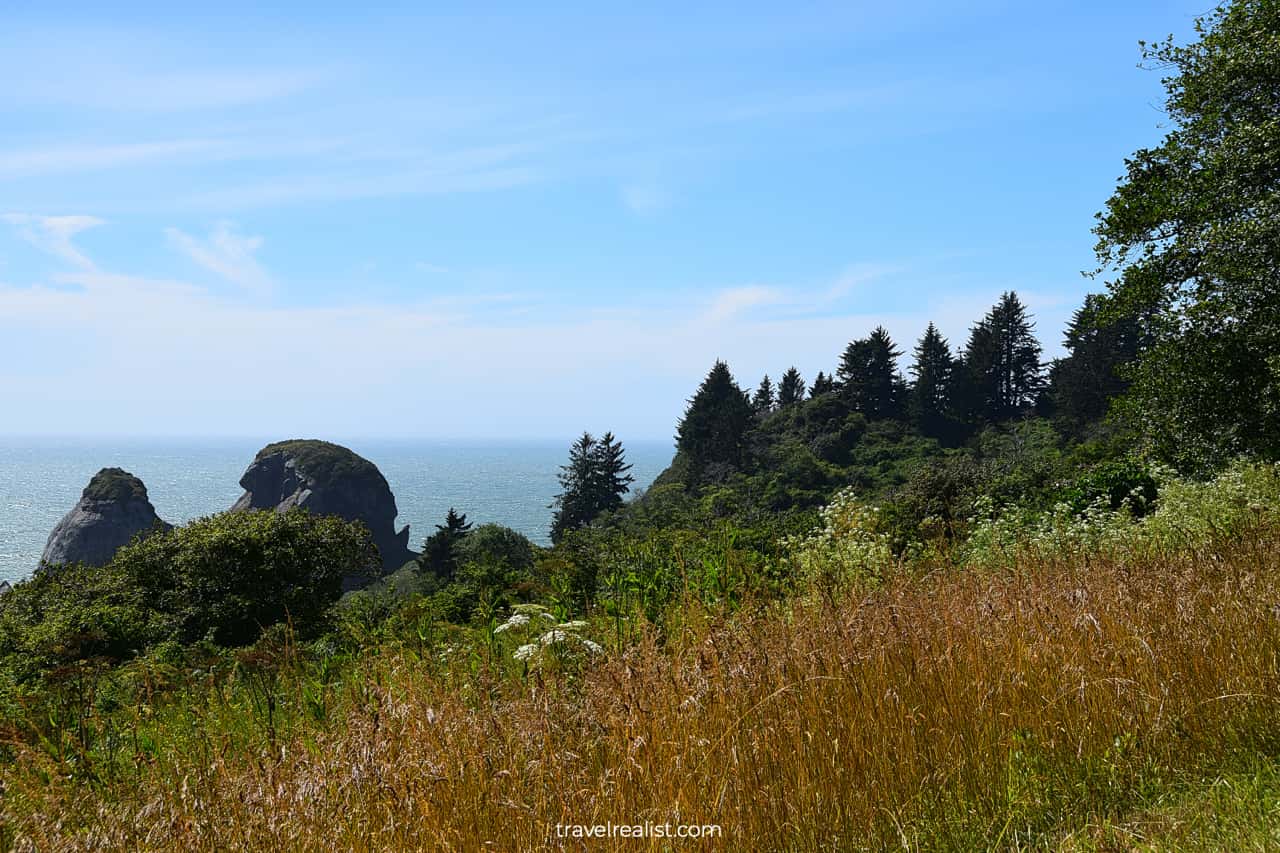
5. Wilson Creek
Wilson Creek should be your next stop no matter whether you are exploring Redwoods by car, bike, or on foot. There is a lot to see at the confluence of Wilson Creek and Pacific Ocean.
Wilson Creek Beach and False Klamath Cove are a beautiful stretch of the Pacific coastline. Rugged ocean shore and forests give Redwood National and State Parks their unique appeal.
You can easily spend hours watching waves break at Wilson Rock and False Klamath Rocks. There are picnic tables at Wilson Creek. You can have a snack with a breathtaking view.
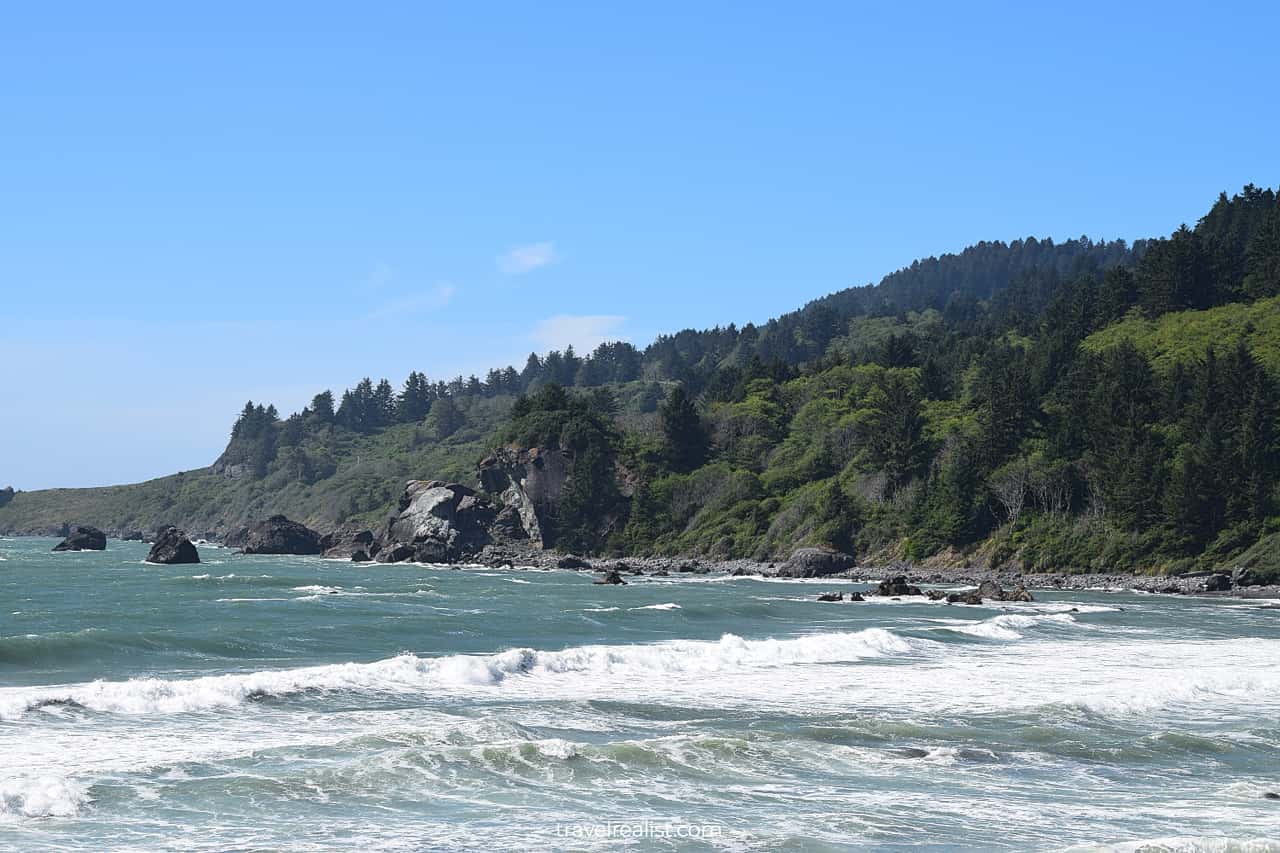
6. Lagoon Creek
You would not have to drive for long once you continue your journey through Redwoods. Lagoon Creek is just minutes from Wilson Creek.
Yet, these two creeks could not be more different. As its name suggests, Lagoon Creek has a large lagoon before the confluence.
It is incredibly picturesque thanks to countless water lilies. The lilies might be in bloom if you visit Lagoon Creek in the summer.
This area has two hiking trails. There is a short Yurok Loop Trail if you have limited time. The Klamath section of the Coastal Trail is a 5.5-mi (8.9-km) trail.
Unless you choose to hike these trails, you should get back on the road. There is still plenty of things to see along the Redwood Scenic Parkway.
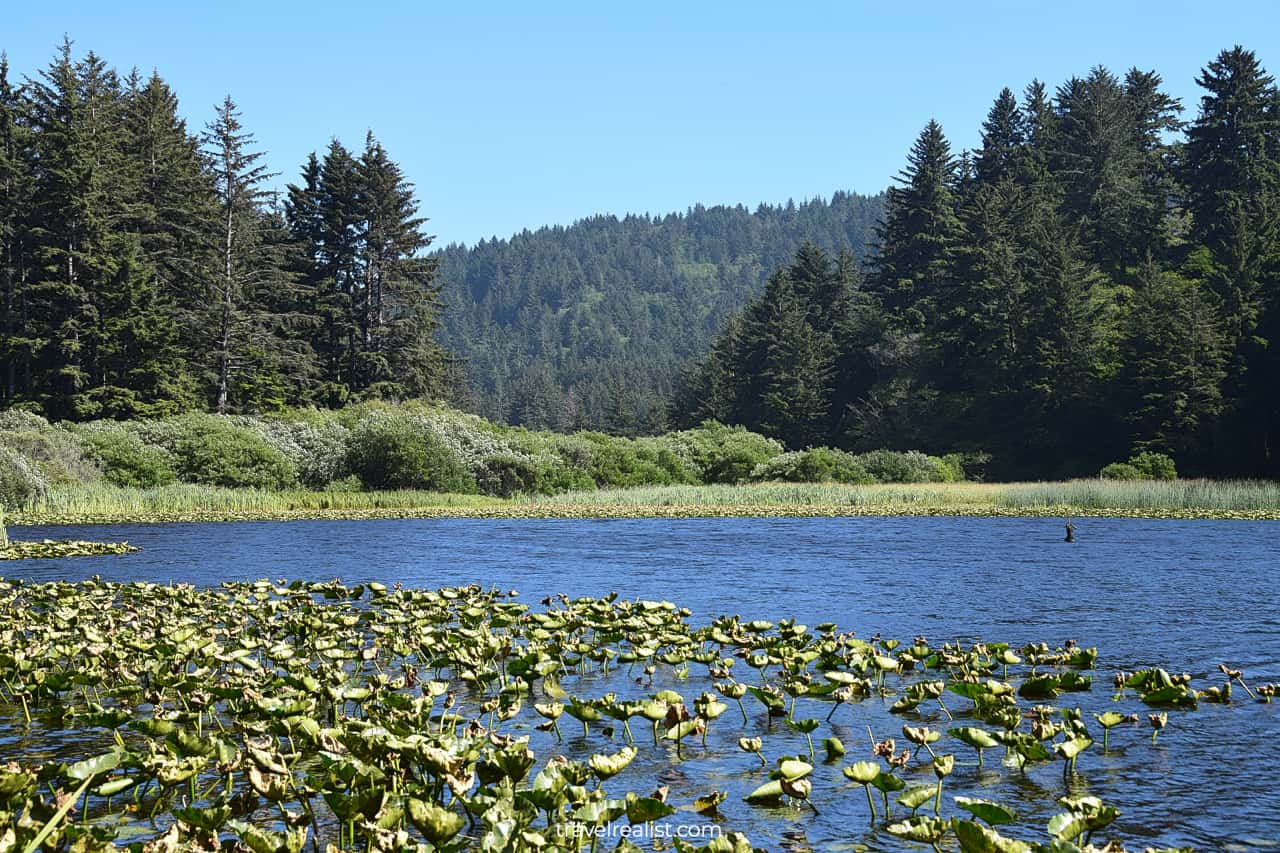
7. Klamath River Overlook
Your next stop is about 15 minutes south from Lagoon Creek. You would need to take a detour from Highway US-101. The winding and narrow Requa Road will bring you to the Klamath River Overlook.
Beware the oncoming traffic. Give the right of way to those driving from the viewpoint. This way, everyone could reach and enjoy the viewpoint safely.
The Klamath River Overlook is one of the most picturesque coastal viewpoints in the park. The views make the detour well worth the time and effort.
The Klamath River delta has a peninsula and a few islands. The peninsula becomes an island depending on the tide.
It is the same Klamath River you might have seen in Klamath Falls, Oregon near Crater Lake. It flows from Upper Klamath Lake in Southern Oregon via Northern California to the Pacific Ocean.
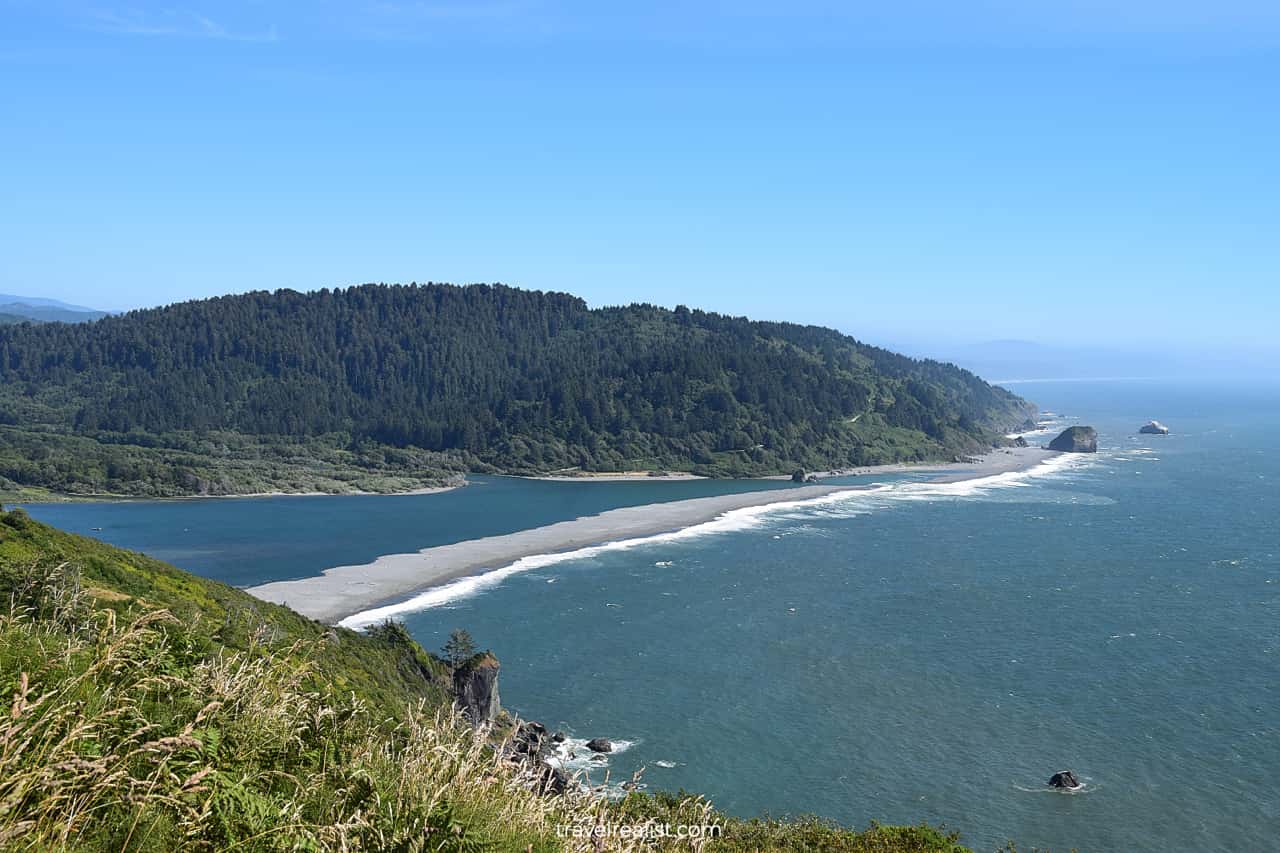
8. Newton B. Drury Scenic Parkway
There are very few opportunities to wander around the trees in this part of the park. In fact, you might start to wonder when you will see redwood trees up-close again.
But this is about to change. You need to take the Newton B. Drury Scenic Parkway. This road is an even more scenic alternative to Highway US-101. It follows Prairie Creek from its source.
You will see most of the redwood trees in the park along this 9-mi (14-km) scenic parkway. Thanks to the numerous pullouts and trailheads you can see the trees from a close distance.
It is best to budget 30 to 60 minutes to drive this Redwood Scenic Parkway. This will give you enough time to explore a few shorter trails and viewpoints.
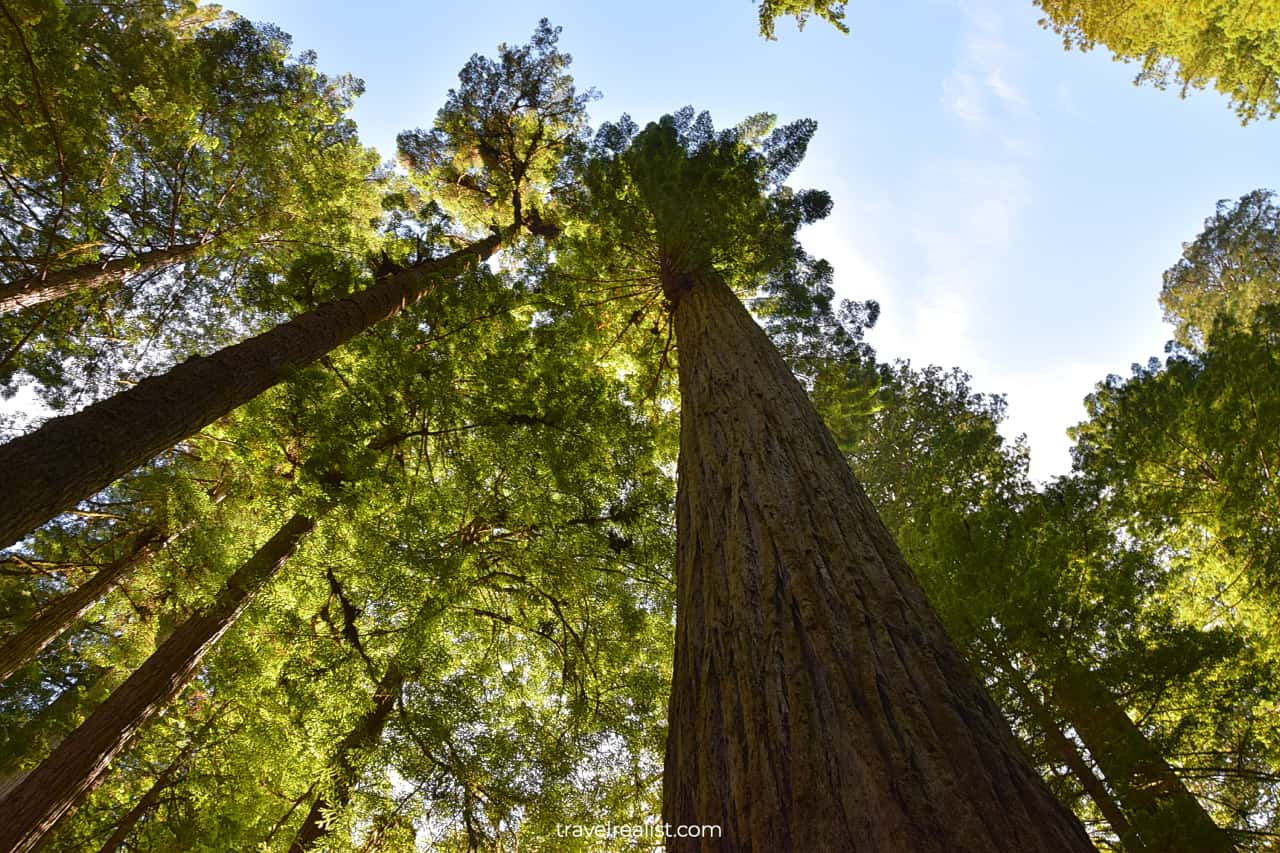
9. Prairie Creek Redwoods State Park
The Newton B. Drury Scenic Parkway goes through Prairie Creek Redwoods State Park. The views from this park are what most people imagine when they think about Redwood National and State Parks.
It has groves of high and old redwood trees. The Ah-Pah Interpretive Trail is the first stop in Prairie Creek Redwoods State Park. It gives you an opportunity to walk along these impressive giant trees.
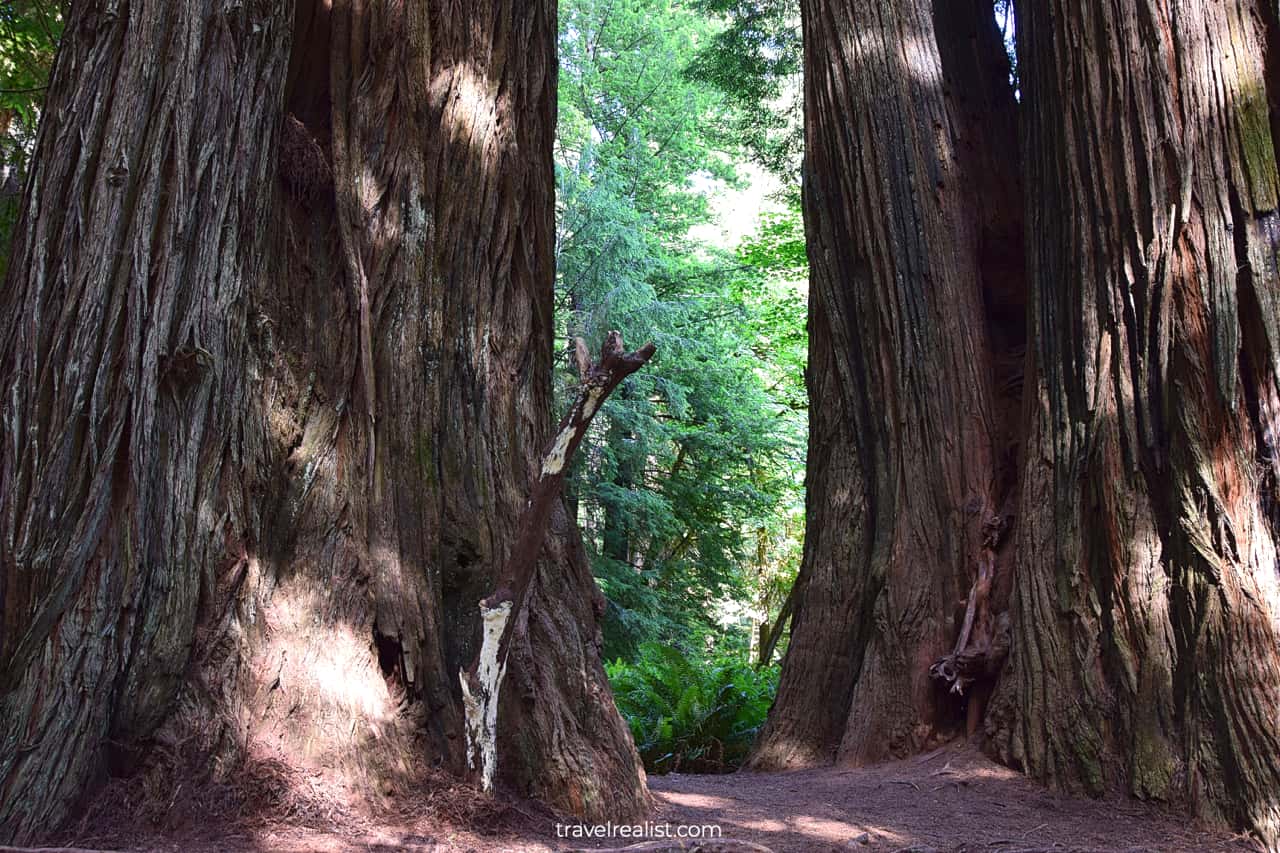
It is impossible to not feel tiny in comparison. In fact, it will be quite difficult to get a picture that captures the whole tree. This is a similar experience to Sequoia National Park, another tree first park in California.
You should not have difficulty seeing ferns. They are growing everywhere along this Redwood Scenic Parkway. You can even find ferns on dying or cut trees. This is quite a sight to see.
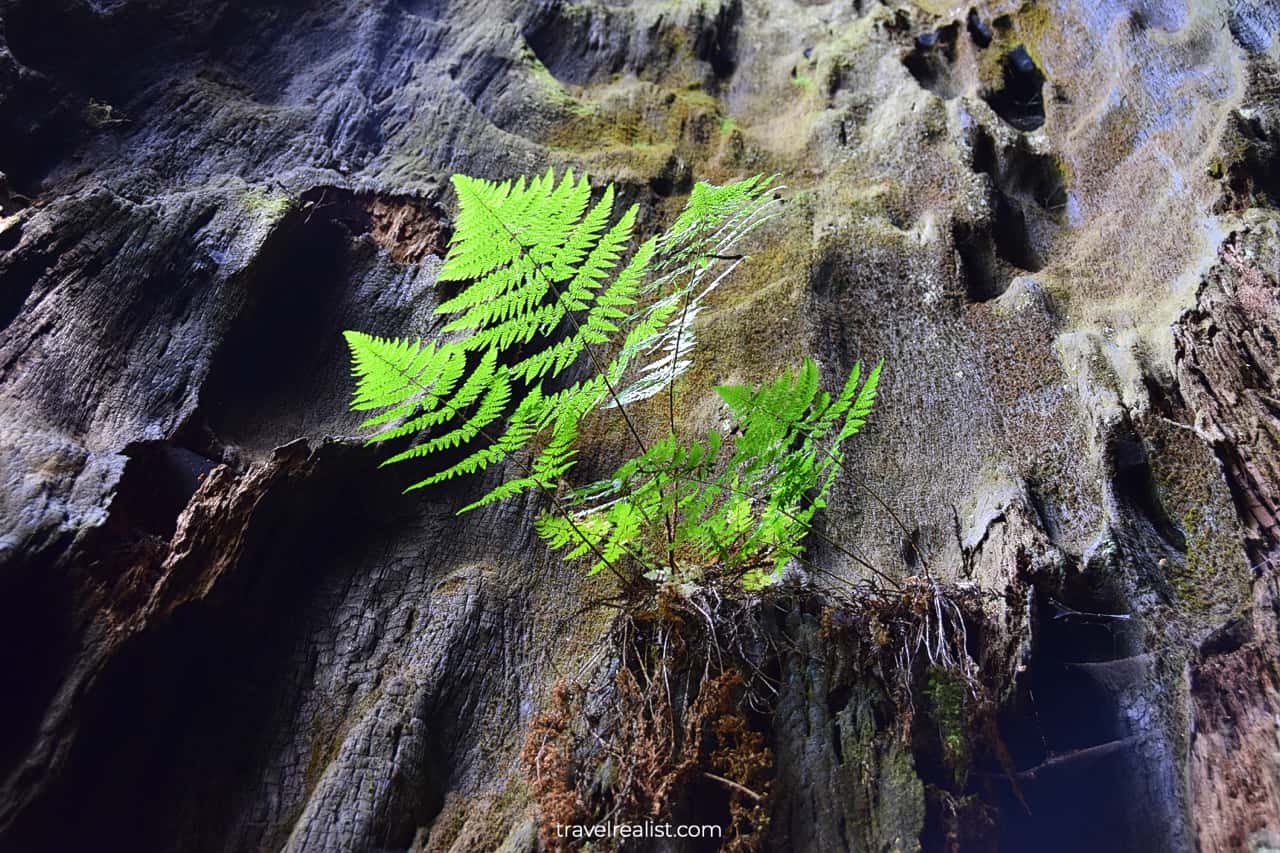
10. Big Tree Wayside
You can choose to see redwoods at Hope Creek, Little Creek, Moorman Pond, or Brown Creek. All of these are great trails to explore in the park.
Yet, most people come to Redwood National and State Parks to see one specific tree. The Big Tree Wayside is a 1,500 year old tree. It is over 300 ft (91 m) tall and 68 ft (21 m) in diameter.
This is an incredibly massive tree. And you cannot possibly miss it as you are driving on the Redwood Scenic Parkway. There will be a full parking lot at the Big Tree Wayside no matter when you visit.
The Big Tree Wayside is less than 330 ft (100 m) from the parking lot. It is an easy stroll on a paved path. Finding parking at the trailhead will be the most challenging part of this hike.
You could use amenities and buy memorabilia at the nearby Prairie Creek Visitor Center. Some Visitor Centers even sell small redwood trees for you to plant at home.
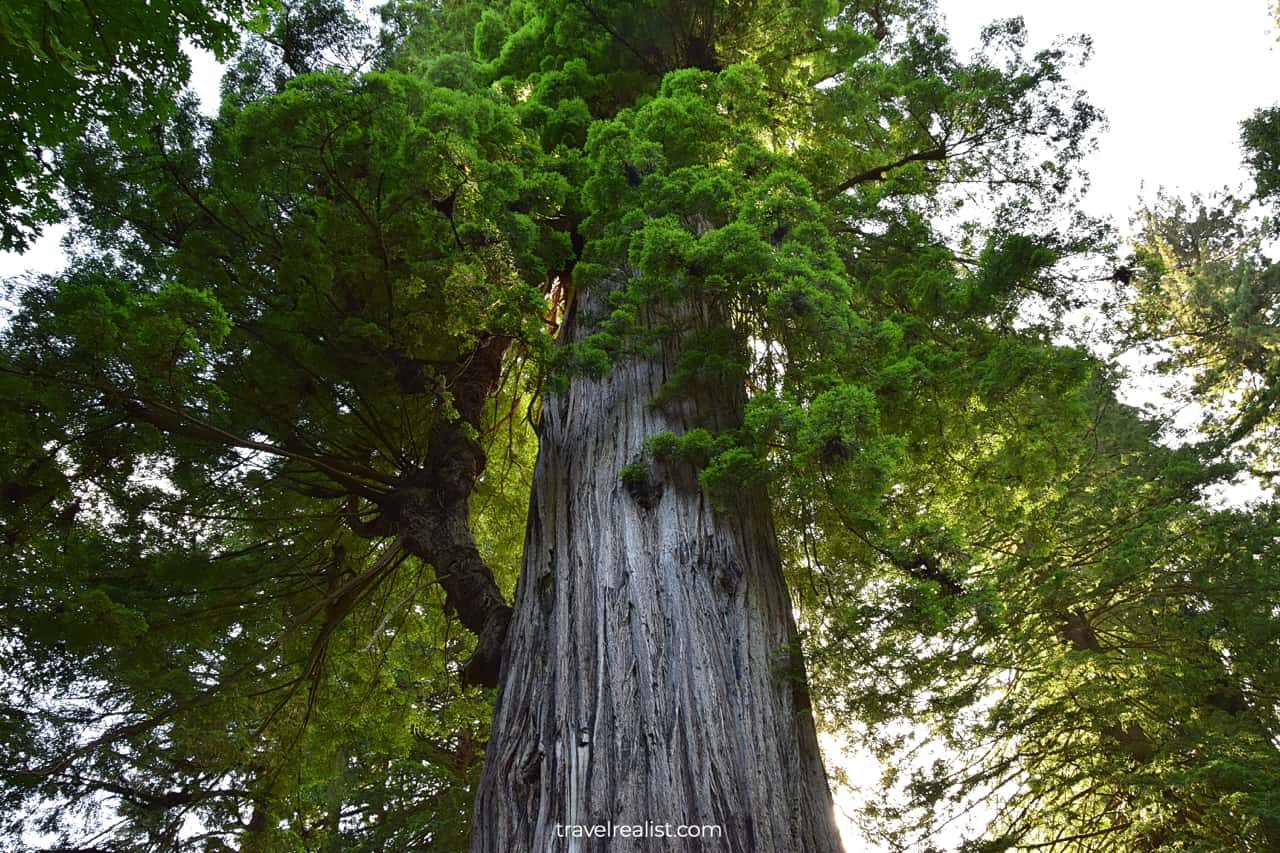
11. Elk Meadow
The Newton B. Drury Parkway exits Prairie Creek Redwoods State Park soon. It then merges with Highway US-101. There will be fewer and fewer redwood trees to see as you drive south.
But there will likely be another thing to keep you on your toes. This section of the Redwood Scenic Parkway enters the Elk Country.
You are almost certain to see elk between Elk Prairie Campground and Elk Meadow Picnic Area. Dusk and dawn are the best times to see wildlife. But you can also see elk there throughout the day.
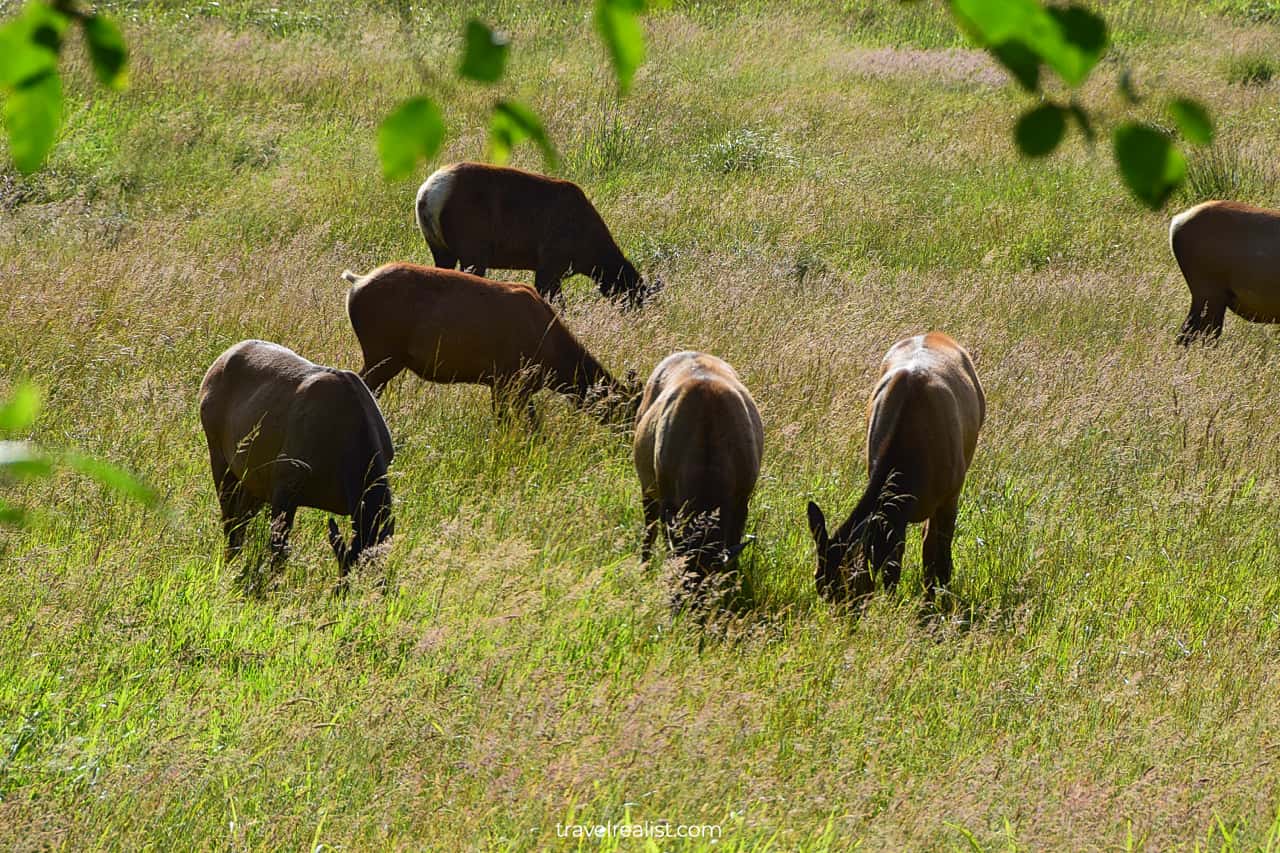
12. Humboldt Lagoons & Sue-Meg
The Redwood Scenic Parkway will bring you to the coast after passing the town of Orick. You will be driving next to the ocean before briefly going inland.
You will find yourself in a series of small California state parks. Humboldt Lagoons State Park protects Stone Lagoon and Big Lagoon.
Sue-Meg, formerly Patrick’s Point, has rugged shoreline and cliffs. Neither park has redwood groves. But you should stop there to get another look at the beautiful coastline of the Pacific Ocean.
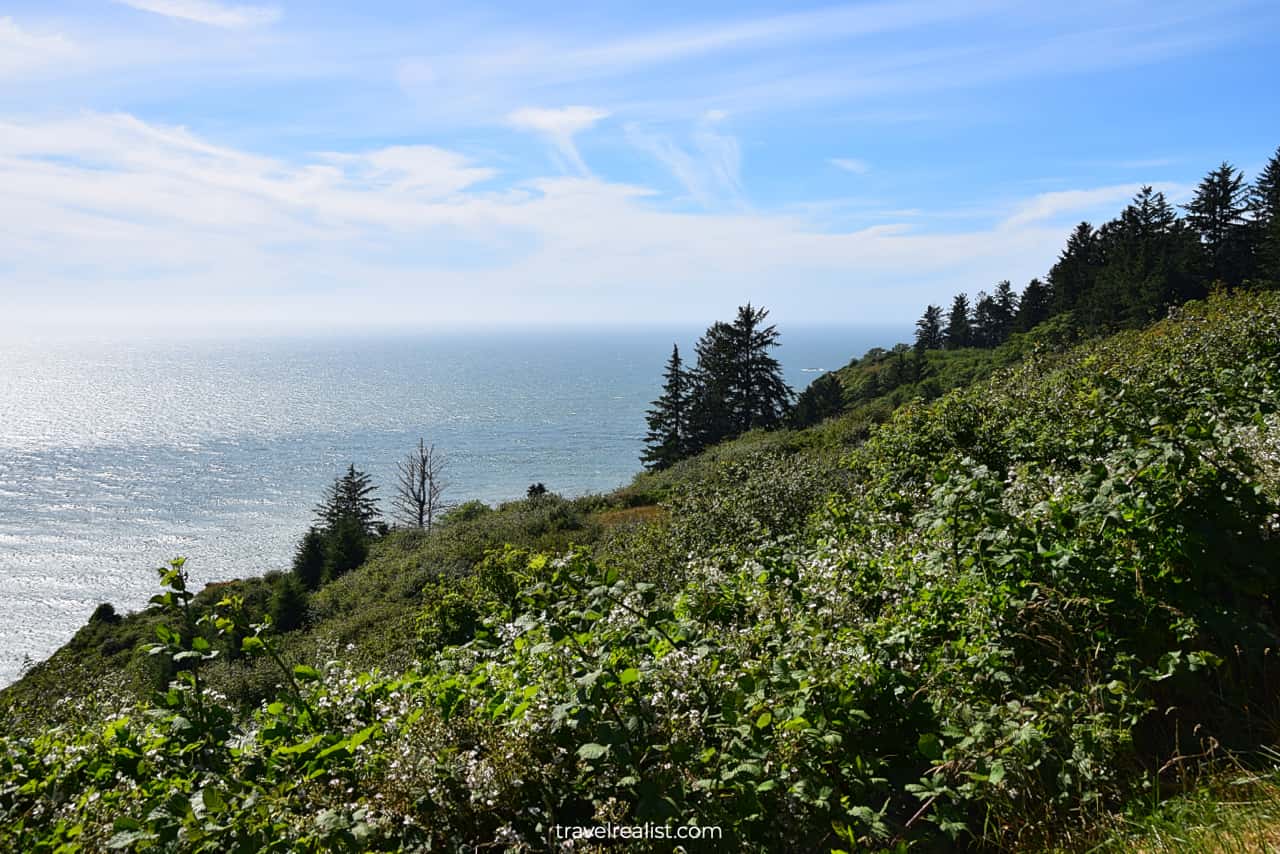
Continue with this Redwood Scenic Parkway Guide. You will learn more about ways to get to the sights, entrance requirements, and places to stay.
Getting to Redwood National & State Parks
Redwood National and State Parks are in a remote part of Northern California. These parks are on the Pacific Ocean coast. They mostly follow Highway US-101.
Redding, California and Medford, Oregon are the closest cities to Redwood National and State Parks. Still, each town is over 2 hours west of these parks.
You would need to travel a lot further to reach Redwood parks from a major airport. Portland is the closest large airport to the parks. It takes 5.5 hours to get to Redwood National and State Parks.
Your other options are quite limited. Sacramento, California is 5.5 hours south. San Francisco Bay Area airports are 6 or more hours away.
Long distances in excess of 300 miles (482 km) each way make Redwood a difficult place to reach. The park is not a day trip destination for most people.
You would need at least a long weekend to enjoy a visit to Redwood National and State Parks. This would give you just enough time to see the main highlights of these parks.
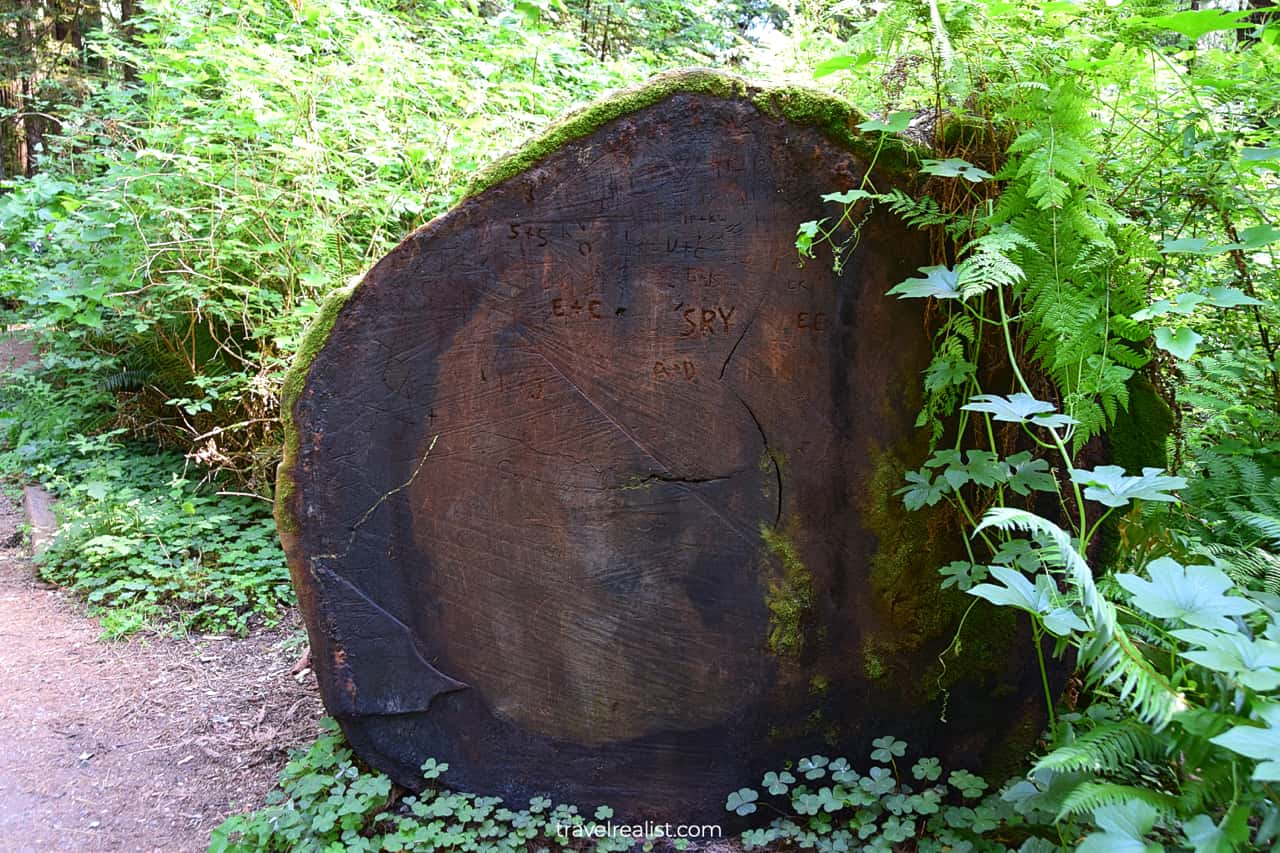
There are 9 parks that make up Redwood National and State Parks.
- Smith River National Recreation Area
- Redwood National Park
- Jedediah Smith Redwoods State Park
- Del Norte Coast Redwoods State Park
- Prairie Creek Redwoods State Park
- Humboldt Lagoons State Park
- Harry A. Merlo State Recreation Area
- Sue-Meg State Park
- Trinidad State Beach
Only the first five parks have redwood groves. Other parks on the list might have occasional redwood trees. But ocean shoreline is their main attraction.
Where to Stay near Redwood Scenic Parkway
Redwood National and State Parks are intertwined with towns and villages. You will pass through a settlement on the way from one park to another. This setup is very similar to Big Sur in Central California.
It also means that there are lots of places to stay right next to the Redwood Scenic Parkway. You do not need to camp to stay in or near the park.
Klamath, Orick, and Trinidad are towns with a few places to stay. They are very close to Redwood National and State Parks. Get ready to pay a location premium at most hotels in these areas.
Look into Crescent City and Eureka for more affordable places to stay. These towns are at the northern and southern boundaries of Redwood Parks.
As a result, you would need to drive longer to the major sights. Cheaper prices per night balance a longer drive. You can decide for yourself what is more important to your and your travel group.
You could also search for places to stay in the largest cities of the region. Medford, Oregon and Redding, California have a lot of options.
Due to even longer drives, you might want to stay in these cities on a longer trip. This way, you could also visit other sights in the region.
Crater Lake and Oregon Caves are great addition to a Medford trip. Redding is a gateway to Lassen Volcanic and Lava Beds.
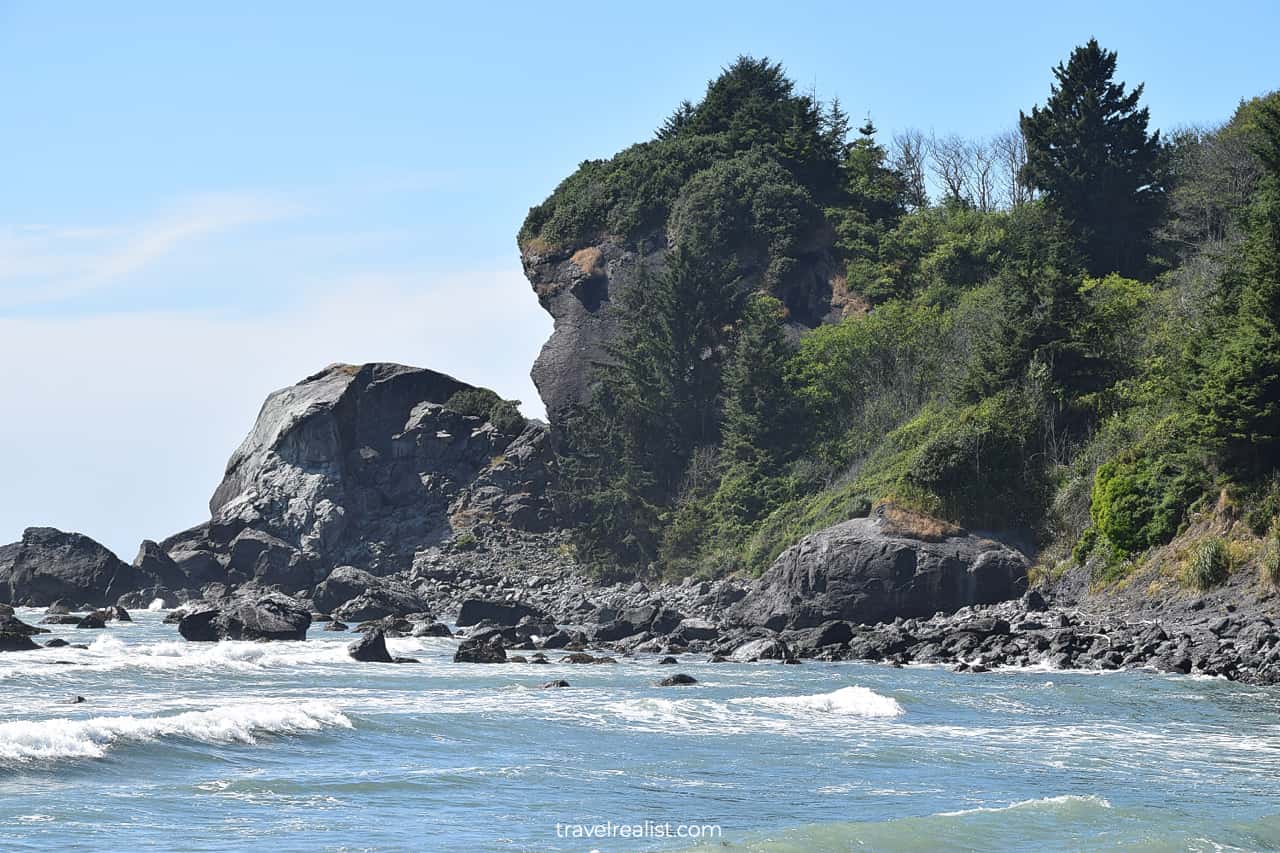
Entrance Requirements & Passes
Redwood National and State Parks are open year round 24 hours a day. You can drive on the Redwood Scenic Parkway at any time.
Visitor Center opening hours differ by season.
- You can get advice from a park ranger every day between 9 a.m. and 5 p.m. in the summer.
- Winter hours are shorter. You can stop by a Visitor Center between 10 a.m. and 4 p.m Wednesday to Sunday.
Visitor Centers, Information, and Ranger Stations observe public holidays. They are closed on New Year’s Day, MLK Day, Presidents’ Day, Thanksgiving, and Christmas.
Redwood National and State Parks do not charge admission fees. They are some of the only parks in the country you can visit free of charge.
You should still take your America the Beautiful annual pass. It will prove helpful in granting free admission to Crater Lake, Lassen Volcanic, and Lava Beds. All of them are in the same region as Redwood.
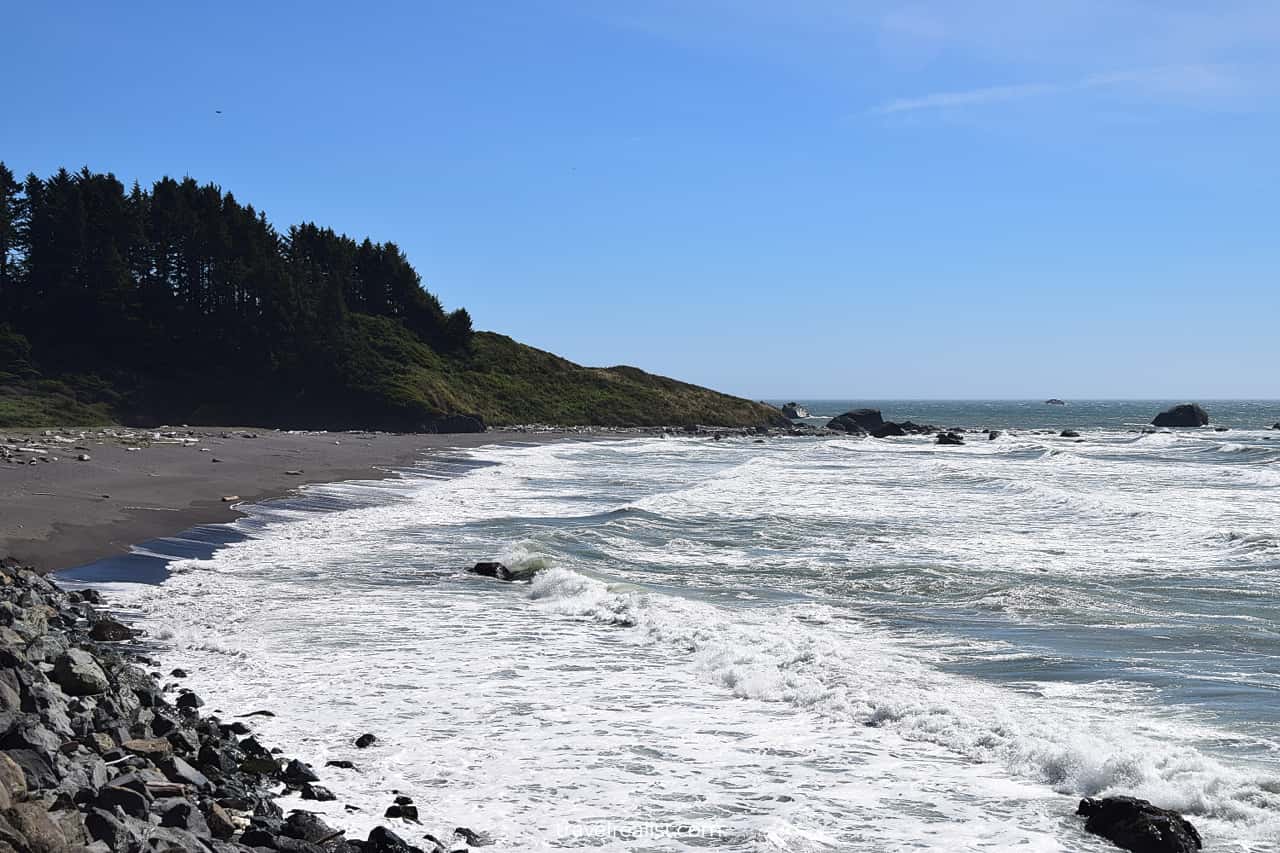
Takeways: Redwood Scenic Parkway
Redwood National and State Parks are a very scenic area. Similar to Sequoia, ancient trees are the main attraction of this park.
But Redwood is a lot more than the tallest trees on the planet. It is a collection of eight different national and state parks.
These parks protect a great variety of landscapes. You can expect to see rugged shoreline, pristine beaches, and hidden lagoons. This variety makes Redwoods similar to the parks of Big Sur.
You will be driving on the Redwood Scenic Parkway the majority of your time in the park. There is hardly a better way to enjoy Coastal California than driving through Redwood.
If diverse landscapes, scenic drives, and giant trees are not enough to lure you to Redwood, look out for wildlife. The park is home to countless elk.
The remote location of Redwood National and State Parks should not deter you from visiting this park. Visit Redwood on a longer trip of the region.
Take a look at this Redwood Scenic Parkway Video Guide. And visit the YouTube channel for the latest videos.
Frequently Asked Questions
Redwood National and State Parks are in Northern California near Oregon state line. The parks are between Crescent City and Eureka.
There are plenty of places to stay in or near Redwood National and State Parks. The towns of Klamath, Orick, and Trinidad have a few places to stay each. They are closest to Redwood National Park.
You could also look into staying in Crescent City or Eureka. Redding and Grants Pass, Oregon are options further away from the park.
Redwood National Park offers you a lot of things to do.
– Drive the Redwood Highway, including Newton B. Drury Scenic Parkway.
– Hike in Simpson-Reed Grove in Jedediah Smith Redwoods State Park.
– Take the unpaved Howland Hill Road to drive through the redwood grove.
– Enjoy a pristine beach at Wilson Creek.
– Admire water lilies at Lagoon Creek.
– See the rugged coastline at Klamath River Overlook.
– Walk to the 1,500 year old Big Tree Wayside.
– Go elk watching at Elk Meadow.
– Buy a small live redwood tree from any Visitor Center.
Portland, Oregon and Sacramento, California are the closest major airports to Redwood National Park. Both cities are about 5 hours away.
The Bay Area airports are another option to see Redwood National and State Parks. Oakland, San Francisco, and San Jose airports are over 6 hours south of Redwood.
Redwood National and State Parks is a massive park. There are 9 national and state parks along a 51-mile stretch of the Redwood Highway.
You would need to budget at least 75 minutes to complete the drive. Add more time to hike and see the viewpoints.
Safe realist travels!

